This past weekend, I attended a two-hour sushi class at the Highland Village location of RA Sushi where I learned how to make several different styles of sushi, as well as how to pair dishes with sake. These classes, which are open to the public, are $58 per person or $110 per couple. They happen about every three months, so check with the restaurant.
 First lesson: vocabulary. Common sushi styles include nigiri (a thin slice of fish on top of rice), sashimi (thin slices of raw fish served alone), maki (the familiar rolls filled with various ingredient, wrapped in seaweed and served sliced) and the handroll (similar to maki, but rolled into a cone shape).
First lesson: vocabulary. Common sushi styles include nigiri (a thin slice of fish on top of rice), sashimi (thin slices of raw fish served alone), maki (the familiar rolls filled with various ingredient, wrapped in seaweed and served sliced) and the handroll (similar to maki, but rolled into a cone shape).
Second lesson: preparation. First on our course syllabus was salmon nigiri. The secret to great sushi is the rice. It must be the correct type of short-grain rice with high starch content so that it is sticky and glossy when cooked and mixed with rice vinegar. (It should go without saying that fresh seafood is also essential.)
Starting with a golf ball-sized ball of rice, we formed it gently into a “thumb-shaped” rectangle, as instructed by our teachers Jimmy Kidu and JoJo Urvino, the head sushi chefs at RA’s Westheimer and CityCentre locations, respectively. Then we draped a slice of salmon on top of the rice and very lightly molded the two parts together, and voila! My first sushi creation was completed. A+. This was paired with Kizakura “Stars,” a sparkling sake with a fruity taste.
Also covered in our class were the well-known sushi rolls, which is a more involved but arguably more fun preparation than nigiri sushi. We started by making salmon skin handrolls: Toasted seaweed is wrapped into an ice cream cone shape and filled with rice, avocado, cucumber, sesame seeds and broiled salmon skin strips. The salmon skin was crunchy and salty, something like fried pork rinds.
Next was the inside-out rainbow roll, similar to a California roll. Working on a flexible rolling mat, a sheet of toasted seaweed is covered in rice, then flipped over and filled with crab, avocado and cucumber and rolled up. RA’s twist? Covering the completed roll with different slices of seafood such as salmon, tuna and crab (photo at top).
Lastly, we made the classic tuna roll – tekka maki – filled with rice and tuna. Simple, and simply delicious.
These rolls were paired with Hananomai Katana, a peppery sake that goes well with oilier dishes such as the salmon skin rolls, and RA sake, made especially for the restaurant in California and served, appropriately, with the California rolls.
All of the sake was served cold, which usually means it is of higher quality. (Lower-quality sake, the kind we used to drink in the hot tub – referencing the first Austin Powers movie here – is often served hot in order to mask any inadequacies.)
Other hints that your sake is top notch? Look for words such as “junmai” and “mu dai,” indicators of the highest quality sakes. And while you’re on the sake menu, wondering about the numbers? Sakes are rated on a scale of -20 to +10, -20 being the sweetest and +10 being the driest.
RA Sushi, 3908 Westheimer, 713-621-5800, and 12860 Queensbury Lane at CityCentre, 713-331-2702, rasushi.com

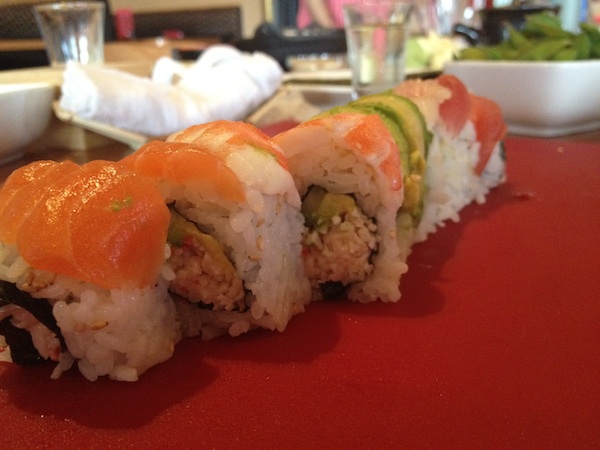
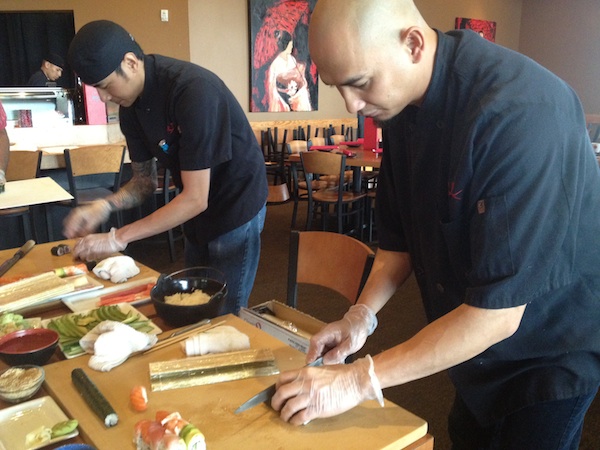

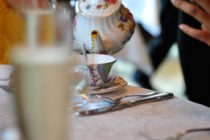
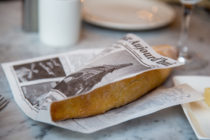
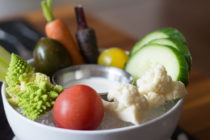



Follow Us